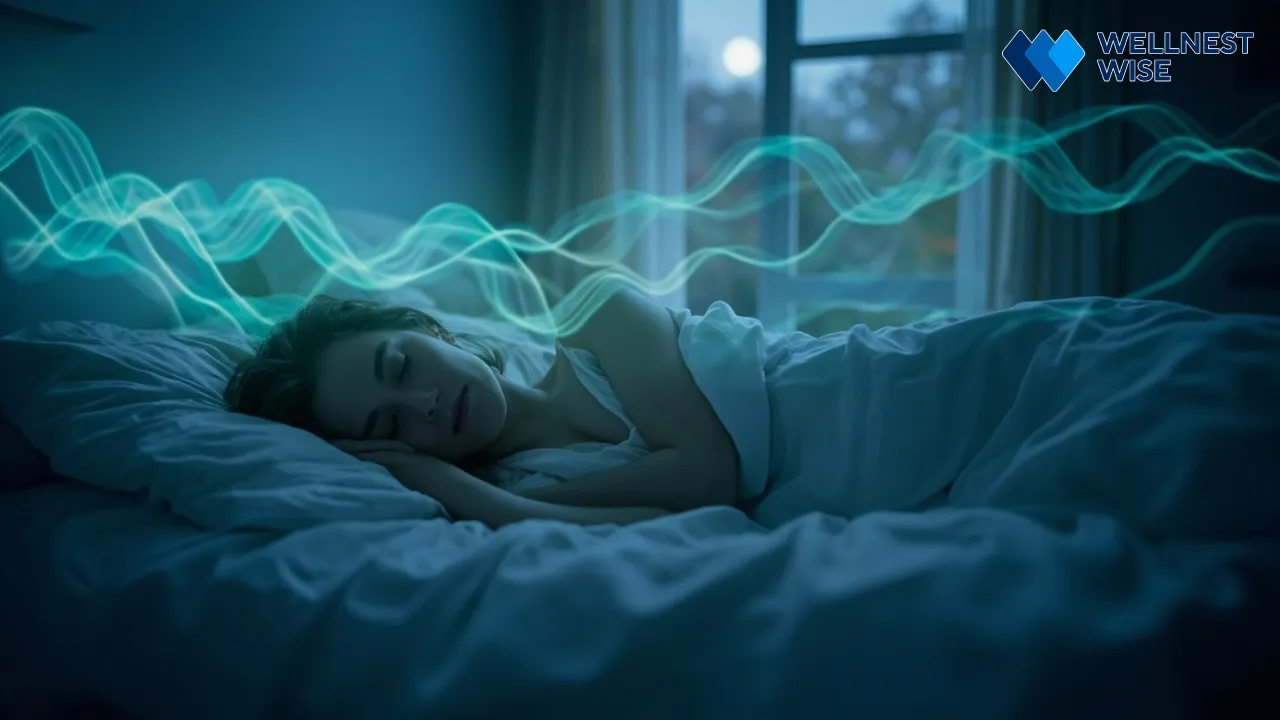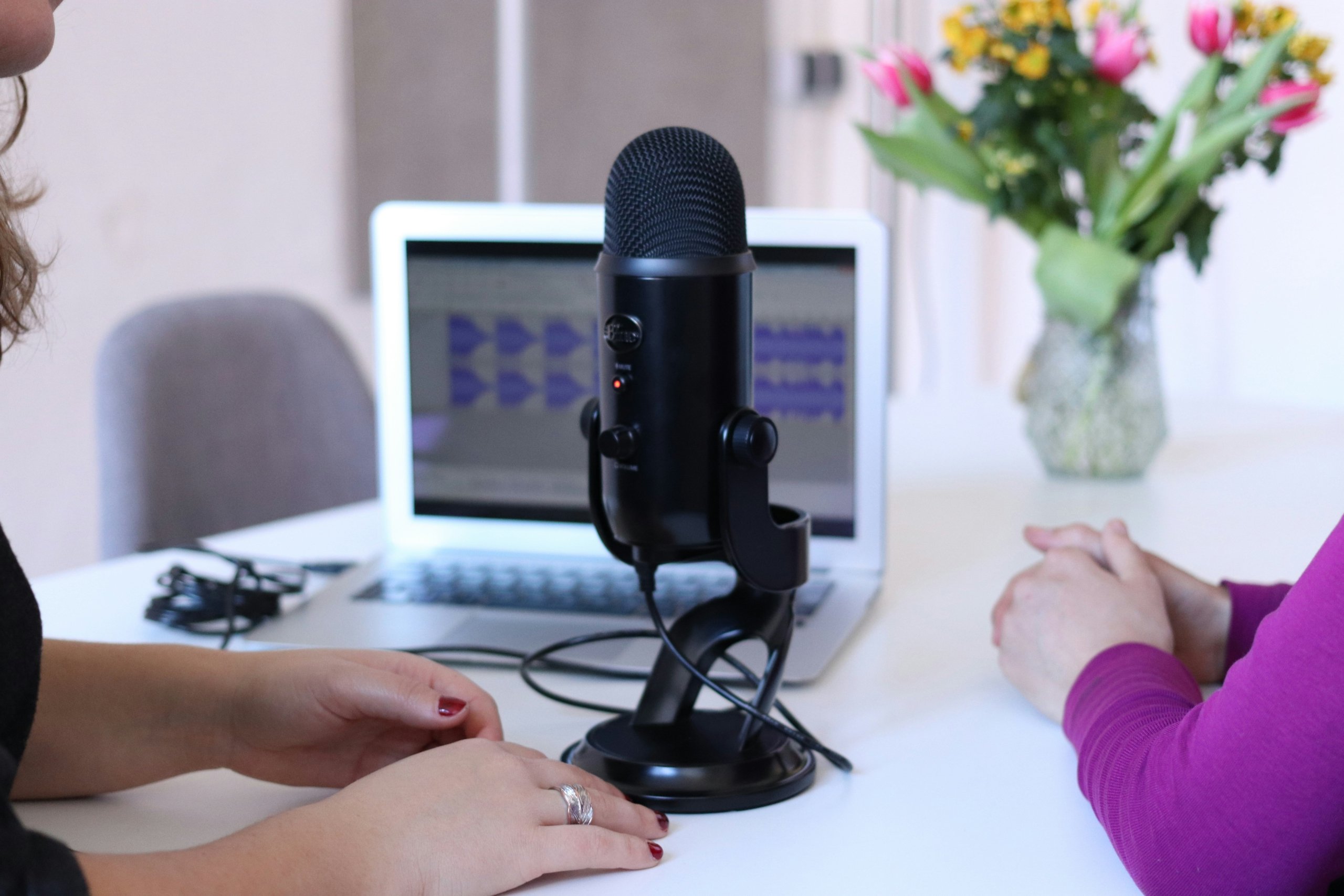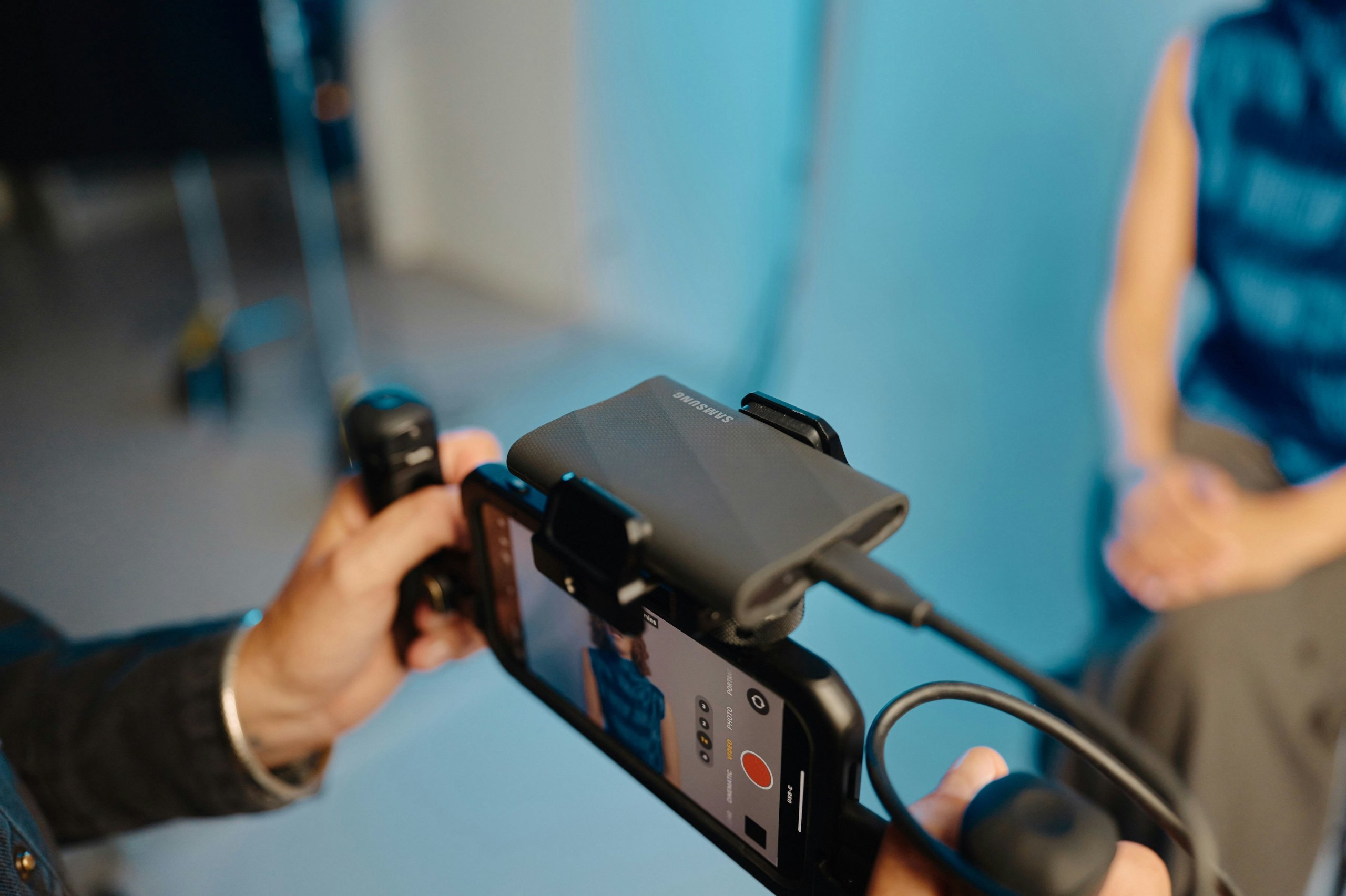Have you ever woken up feeling exhausted, despite getting a full eight hours of sleep? It’s a frustrating experience many of us share, highlighting that the quantity of sleep doesn’t always guarantee quality. Imagine having an internal barometer that could tell you not just how long you slept, but how deeply your body and mind truly recovered. That’s where Heart Rate Variability (HRV) comes in – it’s a powerful, often overlooked metric that offers profound insights into your body’s stress levels, recovery status, and most importantly, the restorative nature of your sleep quality. By understanding and optimizing your HRV, you can unlock the secret to waking up truly refreshed, ready to tackle your day with renewed energy and resilience. Let’s explore how this fascinating physiological marker can transform your nights and, consequently, your life.
Understanding Heart Rate Variability (HRV): Your Body’s Internal Compass
Think of your body as a finely tuned orchestra, with countless systems working in harmony. At the core of this symphony is your heart, whose rhythm provides more than just a simple beat. It’s a complex, ever-changing melody, and the subtle variations in its timing — Heart Rate Variability (HRV) — act as a critical indicator of your internal balance. This isn’t just about how fast your heart beats; it’s about the healthy irregularity within those beats, reflecting your nervous system’s ability to adapt to challenges and find equilibrium.

What is Heart Rate Variability (HRV) and How is it Measured?
Heart Rate Variability (HRV) refers to the millisecond-level fluctuations in the time intervals between successive heartbeats. Unlike a simple heart rate, which measures the average number of beats per minute, HRV specifically quantifies the variation in the R-R intervals (the time between one R-wave and the next on an electrocardiogram). A seemingly regular heart rate, for instance, might still have subtle, healthy variations. These fluctuations are not random; they are a direct output of your autonomic nervous system (ANS), indicating its flexibility and responsiveness.
Historically, HRV was measured using specialized electrocardiogram (ECG) equipment in clinical settings. Today, thanks to advancements in wearable technology, many smartwatches, fitness trackers, and dedicated HRV monitoring devices can accurately capture and interpret these subtle changes using photoplethysmography (PPG) sensors. These devices typically measure HRV during sleep or in a controlled, relaxed state to provide a baseline reading, offering insights into your body’s recovery and stress levels.
The Autonomic Nervous System (ANS): Orchestrator of Your Internal Balance
At the heart of HRV lies the Autonomic Nervous System (ANS), an intricate network that operates largely below your conscious awareness, regulating vital bodily functions such as breathing, digestion, blood pressure, and crucially, your heart rate. It’s the master conductor of your internal environment, ensuring everything runs smoothly, day and night. The ANS is not a monolithic entity; it’s composed of two primary branches that work in dynamic opposition, constantly adjusting to your internal and external world.
Sympathetic vs. Parasympathetic Nervous System: The Dual Controls
These two branches are the sympathetic nervous system and the parasympathetic nervous system. The sympathetic nervous system is often dubbed the “fight or flight” system. It gears your body up for action: increasing heart rate, dilating pupils, and diverting blood flow to muscles. It’s essential for responding to perceived threats or stressors. Conversely, the parasympathetic nervous system is your “rest and digest” system. It promotes calm, conserves energy, and facilitates recovery by slowing the heart rate, aiding digestion, and relaxing muscles. A healthy, adaptable ANS maintains a dynamic balance between these two forces, allowing your body to switch gears efficiently. HRV is a direct reflection of this intricate interplay; a higher HRV often indicates a dominant or more active parasympathetic nervous system, signaling better recovery and readiness.
Why Your HRV Matters Beyond Your Heart Rate: A Key to Well-being
While your basic heart rate tells you how fast your heart is pumping, your HRV provides a deeper narrative about your physiological state. It’s a window into your autonomic balance, offering insights into how well your body is managing stress, adapting to training, and most importantly for our discussion, recovering during sleep. A higher HRV is generally associated with better physical fitness, emotional resilience, and overall well-being. It signifies that your ANS is flexible and robust, capable of responding effectively to various demands.
On the flip side, consistently low HRV can be a red flag. It often indicates chronic stress, overtraining, insufficient recovery, or even underlying health issues. Monitoring your HRV allows you to move beyond just tracking symptoms and instead gain objective data on your body’s internal state. This makes HRV an invaluable tool for athletes optimizing their training, individuals managing chronic stress, and anyone striving for enhanced sleep quality and holistic health.
The Profound Link Between HRV and Restorative Sleep Cycles
Sleep isn’t a passive state; it’s an incredibly active period of physiological restoration, memory consolidation, and emotional processing. Just as HRV reveals insights into your waking stress and recovery, it also offers a unique lens through which to understand the depth and effectiveness of your sleep cycles. The ebb and flow of your HRV throughout the night directly mirrors the body’s recovery efforts and the quality of time spent in different sleep stages, providing a tangible link between your autonomic nervous system and truly restorative rest.

How Your Heart Rate Variability Reflects Sleep Stages and Physiological Recovery
As you transition through the various sleep stages, your autonomic nervous system shifts its activity, and these shifts are clearly visible in your HRV data. During lighter sleep, there might be more variability as your body remains somewhat responsive to the environment. However, it’s in the deeper, more restorative stages that HRV truly shines as an indicator of physiological recovery. Generally, a healthy increase in parasympathetic nervous system activity, leading to higher HRV values, is observed during deep and REM sleep, signaling effective recovery processes.
Deep Sleep HRV and Its Importance for Cellular Restoration
Deep sleep, or slow-wave sleep, is the powerhouse of physical restoration. During this phase, your body repairs tissues, boosts immune function, and replenishes energy stores. From an HRV perspective, deep sleep is typically characterized by increased parasympathetic tone, meaning your “rest and digest” system is highly active. This dominance leads to a noticeable increase in HRV values. A robust deep sleep HRV suggests that your body is effectively engaging in cellular repair and physical recovery, setting the stage for waking up physically refreshed. If your HRV remains low even during deep sleep, it could indicate that your body is still under significant stress or struggling to recover.
REM Sleep and HRV: Insights into Brain and Emotional Processing
REM (Rapid Eye Movement) sleep is when dreams are most vivid, and it’s critical for cognitive functions, emotional regulation, and memory consolidation. Unlike deep sleep, HRV during REM sleep can be more erratic and variable. While there’s still significant parasympathetic activity, the brain is highly active, often resulting in fluctuations that reflect emotional processing and neural activity. The balance of sympathetic and parasympathetic activity during REM is complex, and deviations can sometimes point to disturbed emotional processing or sleep fragmentation. Observing a healthy pattern of HRV shifts through REM sleep indicates your brain is efficiently performing its crucial nightly duties.
The Impact of Autonomic Balance on Sleep Quality and Architecture
The overarching balance between your sympathetic and parasympathetic nervous systems—your autonomic balance—is paramount for optimal sleep quality. When your ANS is well-regulated, it allows for a smooth transition into sleep and stable progression through the sleep stages. A dominant parasympathetic nervous system going into the night promotes faster sleep onset and deeper, more continuous sleep.
Conversely, if your sympathetic nervous system remains overly active due to stress, caffeine, or late-night stimulation, it can hinder the ability to fall asleep, fragment your sleep, and reduce the time spent in crucial deep sleep and REM sleep phases. This imbalance not only affects how you feel in the morning but can have long-term consequences for your health, mood, and cognitive function. Monitoring HRV allows you to see this balance, or imbalance, playing out in real-time, offering a quantifiable measure of your body’s readiness for rest.
Unpacking the Relationship: Low HRV, Chronic Stress, and Compromised Rest
The connection between consistently low HRV and poor sleep quality is clear. When your body is under chronic stress, whether from work, emotional strain, or even intense physical training without adequate recovery, your sympathetic nervous system tends to stay in overdrive. This persistent “fight or flight” mode suppresses parasympathetic activity, resulting in lower HRV.
My own personal journey underscored this point. For the past year, I’ve tracked my sleep using a wearable device that measures HRV alongside traditional sleep metrics. After months of consistent late-night work and poor sleep hygiene, my average HRV scores dropped, and my sleep logs showed frequent awakenings and feelings of unrest in the morning. On a weeklong vacation with no screens after sunset, regular bedtime, and daily yoga, both my HRV numbers and subjective sleep quality improved dramatically. I woke up feeling refreshed, and my device confirmed longer deep sleep phases and fewer nighttime disturbances. The experience underscored the tangible, almost immediate impact of lifestyle choices on both autonomic function and sleep—a lesson I now try to apply to my daily routine, especially during high-stress periods.
This prolonged sympathetic dominance makes it harder to relax, fall asleep, and stay asleep. You might find yourself tossing and turning, or waking up frequently. Even if you get enough hours, the quality of that sleep is compromised because your ANS isn’t facilitating the deep recovery needed. A low nocturnal HRV often signals that your body spent more time in a state of alert, rather than true rest, impacting everything from your immune system to your cognitive performance the next day. Recognizing this link is the first step toward reclaiming your restorative rest.
Interpreting Your HRV Sleep Data for Actionable Insights
So, you’re tracking your HRV during sleep – now what? The real value of Heart Rate Variability lies not just in collecting data, but in interpreting it to gain actionable insights into your sleep quality and overall recovery. Different HRV metrics can tell you various things about your autonomic nervous system and how effectively your body is regenerating each night. Understanding these numbers allows you to move beyond generalized advice and begin personalizing your approach to better rest and well-being.

Navigating Your HRV Metrics: What Do the Numbers Really Mean for Your Sleep?
Most HRV monitoring devices provide several metrics. While the specifics can vary, here are some common ones and what they typically indicate for your sleep quality and recovery:
| HRV Metric | Description | What it Indicates for Sleep & Recovery | General Interpretation |
|---|---|---|---|
| :——— | :———- | :———————————– | :——————— |
| SDNN | Standard Deviation of all NN intervals (normal-to-normal heartbeats) | Reflects overall ANS adaptability and total HRV. A broad measure of both sympathetic and parasympathetic activity. | Higher = Generally better autonomic flexibility and recovery. Lower = Reduced adaptability, potential stress/fatigue. |
| RMSSD | Root Mean Square of Successive Differences | Reflects short-term variations in heartbeat intervals, strongly correlating with parasympathetic nervous system activity. | Higher = Dominant parasympathetic activity, indicating good recovery, relaxation, and readiness for sleep. Lower = Increased sympathetic tone, potential stress. |
| PNN50 | Percentage of successive NN intervals that differ by more than 50 ms | Another robust indicator of parasympathetic nervous system activity. | Higher = Strong parasympathetic influence, excellent for rest and recovery. Lower = Reduced relaxation and recovery potential. |
Note: Context is key. A single reading is less important than your personal trend over time. What’s “good” is relative to your own baseline.
Distinguishing Natural HRV Fluctuations from Trends Indicating Sleep Debt or Stress
It’s completely normal for your HRV to fluctuate day-to-day. Factors like intense exercise, a stressful meeting, or even a celebratory meal can cause temporary dips. The key is to look for trends over time. A single low HRV reading after a particularly grueling workout might just mean your body is working hard to recover. However, a consistently low HRV trend over several days or weeks, especially when combined with subjective feelings of fatigue or poor sleep quality, is a stronger indicator of sleep debt or chronic stress.
Conversely, if your HRV starts to consistently trend upwards after implementing new relaxation techniques or improving sleep hygiene, it’s a positive sign that your autonomic nervous system is finding better balance and you’re achieving more restorative rest. Pay attention to how your HRV correlates with your energy levels, mood, and perceived sleep quality—this holistic view offers the most meaningful insights.
Utilizing Wearable Technology for Consistent Sleep Tracking and HRV Monitoring
The accessibility of wearable technology has revolutionized how we can monitor our health, and HRV is no exception. Devices worn on your wrist, finger, or chest can continuously track your heart rhythm during the night, providing valuable data about your HRV and sleep stages. This consistent, non-invasive sleep tracking eliminates the need for complex lab setups, empowering you to gather data in your natural sleep environment.
Choosing Reliable Devices for Accurate Heart Rate Variability Measurement
When selecting a wearable technology for HRV monitoring, accuracy is paramount. While many devices offer HRV insights, some are more reliable than others. Look for devices that have been validated against clinical-grade ECGs, or at least have strong reputations for sensor accuracy. Brands that focus on comprehensive sleep tracking and offer detailed app interfaces for data interpretation are often a good starting point. Research reviews and expert opinions can guide you, but remember that even the best wearables are tools for insight, not medical diagnostic devices.
Best Practices for Consistent Data Collection and Meaningful Insights
To get the most out of your HRV data, consistency is crucial. Wear your device every night, ensuring it’s properly fitted according to the manufacturer’s instructions. Establish a consistent bedtime and wake-up time, and minimize external factors that could skew your data, such as excessive alcohol consumption, late-night caffeine, or intense exercise just before bed. Also, remember to log how you feel each morning. This subjective feedback, combined with your objective HRV numbers, paints the most complete picture of your sleep quality and recovery journey. Over time, you’ll begin to see patterns and understand what truly impacts your HRV and rest.
Evidence-Based Strategies to Optimize Your HRV for Deeper Sleep
Understanding your HRV data is just the beginning; the real power lies in using that knowledge to implement changes that promote deeper, more restorative sleep. Fortunately, many strategies backed by scientific evidence can help improve your Heart Rate Variability by enhancing your autonomic balance, particularly by boosting your parasympathetic nervous system activity. These aren’t just quick fixes; they are sustainable lifestyle adjustments that foster overall well-being and resilience.

Nutritional Approaches to Support Autonomic Balance and Sleep Quality
What you eat profoundly impacts your autonomic nervous system and, consequently, your HRV and sleep quality. A balanced diet rich in micronutrients supports optimal physiological function and stress resilience.
- Magnesium-Rich Foods for Relaxation: Magnesium is a crucial mineral involved in hundreds of bodily processes, including nerve and muscle function, and is known for its calming properties. Incorporate foods like leafy greens, nuts (almonds, cashews), seeds (pumpkin, chia), legumes, and whole grains. Research suggests adequate magnesium intake can improve sleep quality and help regulate the ANS.
- Omega-3 Fatty Acids for Inflammation Modulation: Found in fatty fish (salmon, mackerel), flaxseeds, and walnuts, Omega-3 fatty acids have anti-inflammatory effects that can positively influence HRV. Chronic inflammation can increase sympathetic activity; reducing it helps the ANS achieve better balance.
- Balanced Macronutrient Intake for Stable Blood Sugar: Eating balanced meals with a good mix of complex carbohydrates, lean proteins, and healthy fats helps stabilize blood sugar levels. Erratic blood sugar can trigger stress responses that negatively impact HRV and disturb sleep.
- Importance of Hydration: Dehydration, even mild, can stress the body and elevate heart rate, potentially lowering HRV. Ensure consistent water intake throughout the day, but avoid excessive fluids right before bed.
- Avoiding Late-Night Stimulants and Heavy Meals: Caffeine and alcohol can significantly disrupt sleep architecture and suppress HRV. Similarly, heavy, rich meals close to bedtime force your digestive system into overdrive, keeping your sympathetic nervous system active when it should be winding down. Aim to finish eating at least 2-3 hours before sleep.
Mind-Body Practices for Stress Reduction and Enhanced HRV during Rest
Chronic stress is a primary culprit for low HRV and poor sleep. Engaging in mind-body practices can directly counteract stress, fostering a dominant parasympathetic response that prepares your body for restorative sleep.
The Power of Controlled Breathing and Mindfulness Meditation
One of the most immediate ways to influence your HRV is through controlled breathing. Deep, slow, diaphragmatic breathing activates your vagus nerve, a key component of the parasympathetic nervous system. Practices like 4-7-8 breathing (inhale for 4, hold for 7, exhale for 8) can quickly shift your autonomic balance towards relaxation. Similarly, mindfulness meditation teaches you to observe thoughts and sensations without judgment, reducing mental rumination that often interferes with sleep onset. Regular practice can significantly improve HRV over time by training your body to be less reactive to stressors.
The Role of Consistent Physical Activity in Boosting HRV and Improving Sleep
While intense exercise can temporarily lower HRV, consistent, moderate physical activity is a powerful tool for long-term HRV improvement and better sleep quality. Regular aerobic exercise strengthens your cardiovascular system and enhances ANS adaptability, allowing for more robust parasympathetic activity during recovery.
Timing Your Workouts for Optimal Recovery and Rest
The timing of your workouts matters. While morning or early afternoon exercise is generally beneficial for HRV and sleep, intense workouts too close to bedtime can be counterproductive. The stimulating effects of exercise, including elevated heart rate and body temperature, can interfere with your body’s natural wind-down process. Aim to complete vigorous exercise at least 3-4 hours before you plan to go to sleep, giving your body ample time to cool down and your ANS to shift towards relaxation.
Cultivating Optimal Sleep Hygiene Practices for a Truly Restorative Night
Beyond specific dietary and exercise interventions, establishing excellent sleep hygiene is foundational for optimizing your HRV and achieving truly restorative sleep. These practices create an environment and routine that signals to your body that it’s time to rest and recover.
Creating Your Ideal Sleep Environment and Consistent Routine
Your sleep environment should be a sanctuary for rest:
- Dark: Block out all light. Even small amounts can disrupt melatonin production.
- Quiet: Minimize noise. Consider earplugs or white noise if needed.
- Cool: The optimal temperature for sleep is typically between 60-67°F (15-19°C).
- Comfortable: Invest in a supportive mattress and pillows.
Equally important is a consistent routine. Go to bed and wake up at roughly the same time every day, even on weekends. This regular schedule reinforces your body’s natural circadian rhythm. Implement a relaxing pre-sleep routine, such as a warm bath, reading a book, or gentle stretching, to signal to your body that it’s time to unwind. Avoiding screens (phones, tablets, TVs) at least an hour before bed is also critical, as the blue light they emit can suppress melatonin and keep your sympathetic nervous system active.
Personalizing Your Journey: Leveraging HRV for Sustained Sleep Improvement
The beauty of HRV monitoring is its ability to provide personalized feedback. There’s no one-size-fits-all solution for sleep quality, and your HRV data acts as a unique guide, helping you understand what truly works for your body. By actively interpreting these insights, you can move beyond general recommendations and craft a lifestyle that genuinely fosters deeper, more restorative rest and enhanced overall well-being.

Building a Personalized Sleep and Recovery Plan Based on Your HRV Feedback
Once you’ve consistently tracked your HRV and understood its fluctuations, you’re ready to build a truly personalized sleep and recovery plan.
- Identify Your Triggers: Does a late-night heavy meal consistently drop your nocturnal HRV? Does an evening meditation session consistently boost it? Use your data to identify personal “stressors” and “restorers.”
- Experiment and Observe: Introduce one new strategy (e.g., magnesium supplement, early morning walk, consistent bedtime) at a time and monitor its impact on your HRV over a few days or a week. This allows you to see direct correlations.
- Adjust and Refine: If a strategy isn’t yielding the desired HRV improvement or sleep quality benefits, adjust it or try something new. Your body’s needs can change, so your plan should be dynamic.
- Celebrate Small Wins: Notice when your HRV trends upward or your sleep scores improve. Positive reinforcement helps maintain motivation on your journey to better sleep.
Recognizing Persistent Sleep or HRV Concerns: When to Consult a Health Professional
While HRV monitoring is an empowering self-help tool, it’s not a substitute for professional medical advice. If you consistently observe very low HRV scores, despite implementing healthy lifestyle changes, or if you experience persistent sleep concerns like chronic insomnia, excessive daytime sleepiness, or symptoms of sleep apnea, it’s crucial to consult a health professional. A doctor, sleep specialist, or cardiologist can help rule out underlying medical conditions and provide appropriate diagnosis and treatment. Your HRV data can be a valuable piece of information to share with them.
The Long-Term Benefits of Optimizing Your HRV for Holistic Well-being and Resilience
Optimizing your HRV is more than just improving your sleep; it’s an investment in your long-term holistic well-being and resilience. A healthy, adaptable autonomic nervous system contributes to:
- Enhanced physical recovery: Better performance in exercise and daily activities.
- Improved stress management: Greater ability to cope with life’s challenges.
- Stronger immune function: A body better equipped to fight off illness.
- Better emotional regulation: More stable mood and reduced anxiety.
- Cognitive clarity: Sharper focus, memory, and decision-making.
By consistently working to improve your HRV, you’re not just chasing better numbers; you’re cultivating a robust internal system that supports every aspect of your health, leading to a more energetic, balanced, and fulfilling life.
Conclusion & Takeaways
Understanding the intricate relationship between Heart Rate Variability (HRV) and sleep quality is a game-changer for anyone seeking truly restorative rest. Your HRV acts as a powerful, objective window into your body’s autonomic balance, revealing how effectively you’re managing stress and recovering during sleep. By actively monitoring your HRV data, particularly through accessible wearable technology, you gain unprecedented insight into your own physiology.
The key takeaway is this: A higher HRV often signifies a healthy, adaptable autonomic nervous system, indicating that your body is well-equipped to achieve deep, rejuvenating sleep. Conversely, a consistently low HRV can be a critical indicator of chronic stress or insufficient recovery. But this isn’t a passive observation. Armed with this knowledge, you can implement evidence-based strategies – from targeted nutritional choices and mind-body practices to consistent physical activity and optimal sleep hygiene – all designed to boost your HRV and, in turn, transform your nights.
Start today by understanding your own body’s signals. Implement one or two of these strategies, observe your HRV trends, and witness the profound impact on your sleep quality and overall well-being. Your journey to deeper, more restorative rest isn’t just about sleeping more; it’s about sleeping smarter, guided by the internal compass of your HRV. Embrace this scientific insight to unlock a more energized, resilient, and vibrant you.
FAQ
Practical, scientific Q&A
Can a single low HRV reading indicate a serious problem with my sleep?
No, a single low HRV reading typically does not indicate a serious problem. HRV fluctuates naturally due to many factors like recent exercise, stress, diet, or even hydration levels. It’s more important to look at HRV trends over several days or weeks. A persistent decline in your average HRV below your personal baseline, especially when accompanied by feelings of fatigue or poor sleep quality, is a stronger indicator that your autonomic nervous system might be under strain or your sleep recovery is compromised, warranting a closer look at your lifestyle or consultation with a health professional.
How quickly can I expect to see improvements in my HRV and sleep quality after making lifestyle changes?
The speed of improvement can vary significantly based on individual factors and the changes implemented. Some people might observe noticeable increases in their HRV and subjective sleep quality within a few days or a week of consistent, positive lifestyle adjustments (e.g., improved sleep hygiene, stress reduction techniques, regular moderate exercise). However, for more substantial and sustained improvements in HRV and sleep architecture, it often takes several weeks or even months of dedicated effort. Consistency is key, as the autonomic nervous system adapts over time.















